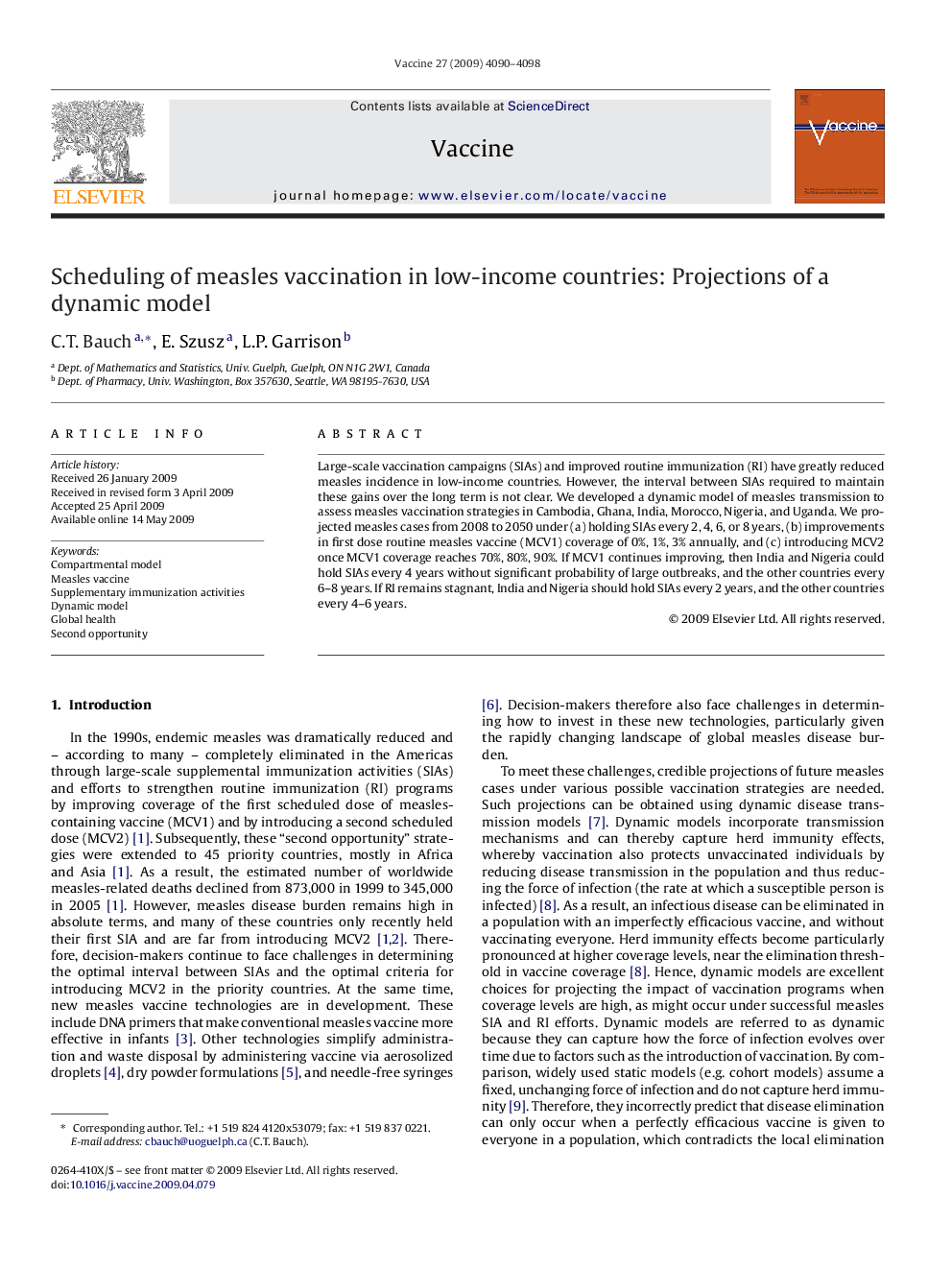| Article ID | Journal | Published Year | Pages | File Type |
|---|---|---|---|---|
| 2405399 | Vaccine | 2009 | 9 Pages |
Large-scale vaccination campaigns (SIAs) and improved routine immunization (RI) have greatly reduced measles incidence in low-income countries. However, the interval between SIAs required to maintain these gains over the long term is not clear. We developed a dynamic model of measles transmission to assess measles vaccination strategies in Cambodia, Ghana, India, Morocco, Nigeria, and Uganda. We projected measles cases from 2008 to 2050 under (a) holding SIAs every 2, 4, 6, or 8 years, (b) improvements in first dose routine measles vaccine (MCV1) coverage of 0%, 1%, 3% annually, and (c) introducing MCV2 once MCV1 coverage reaches 70%, 80%, 90%. If MCV1 continues improving, then India and Nigeria could hold SIAs every 4 years without significant probability of large outbreaks, and the other countries every 6–8 years. If RI remains stagnant, India and Nigeria should hold SIAs every 2 years, and the other countries every 4–6 years.
